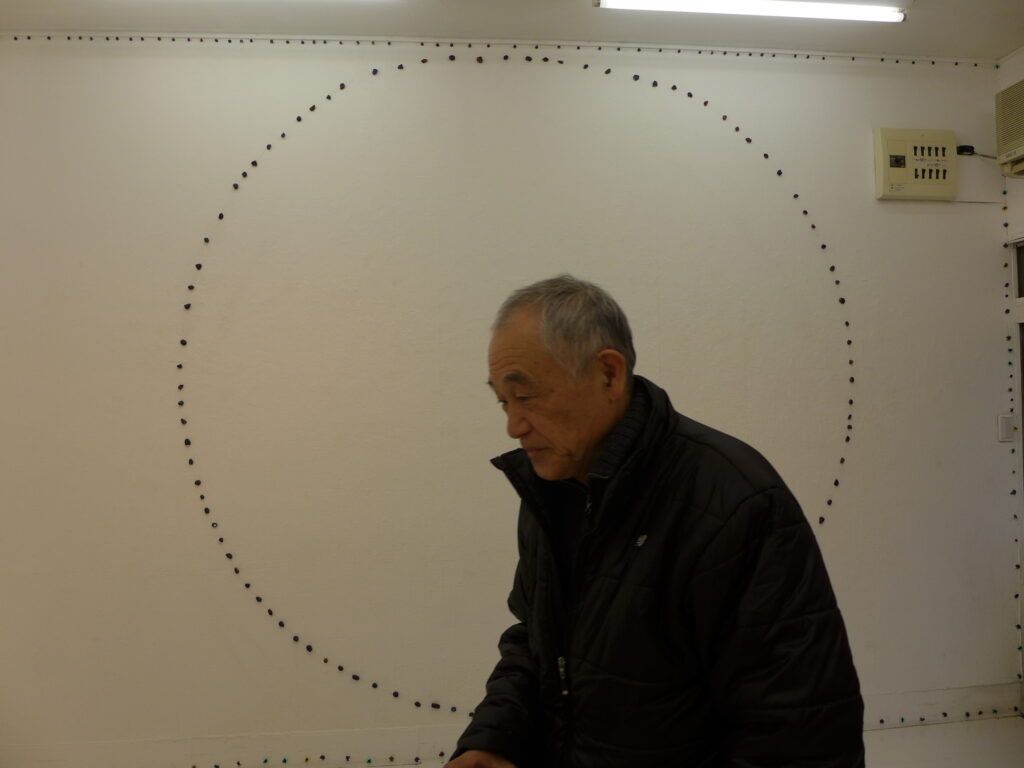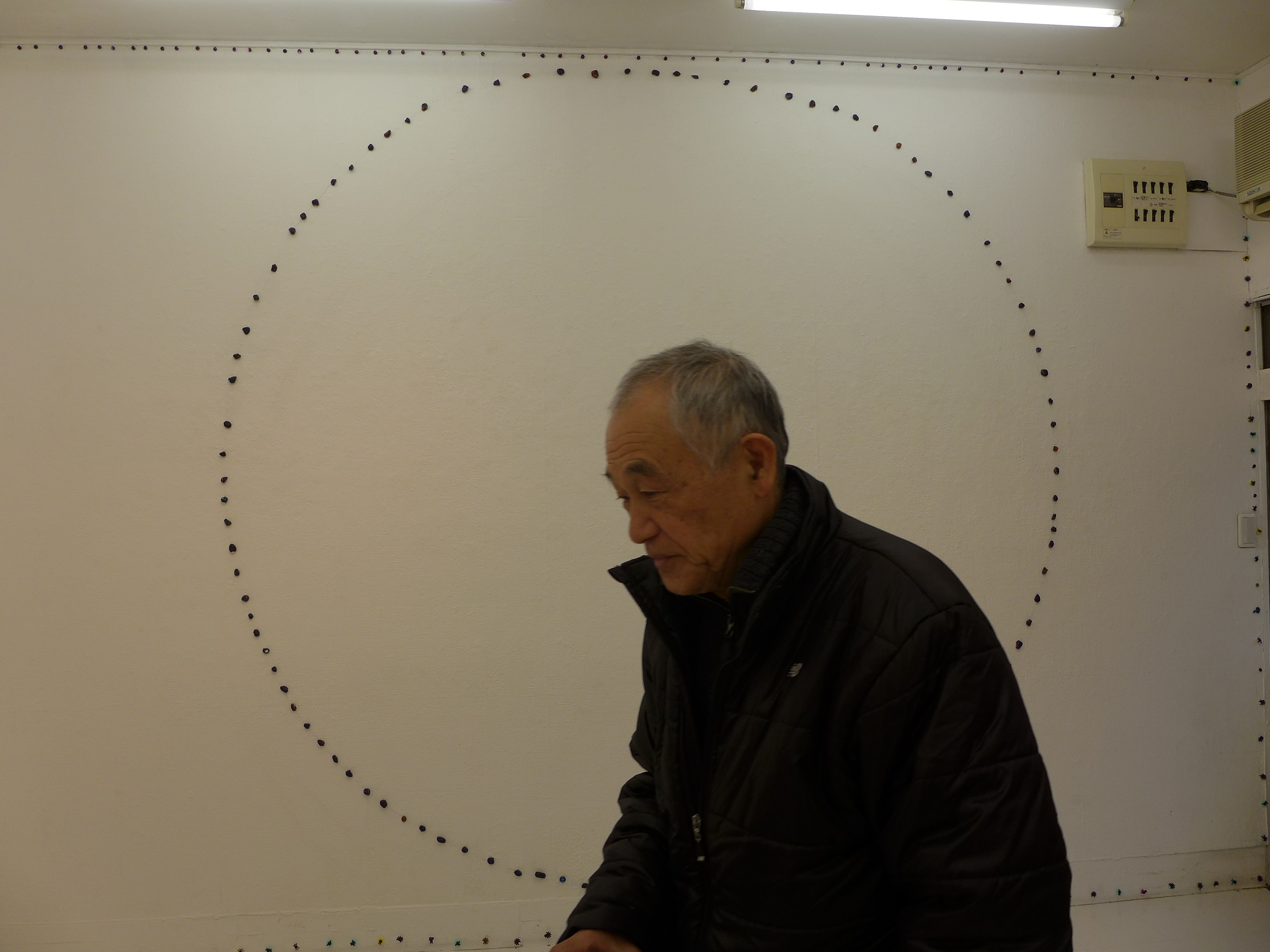About the Unity Between Tradition and Contemporary Art
| 2002年9月発行海月通信第17号掲載 |

僕は絵描きで言葉とか文章はにがてなもので、絵里さんに伝わるかどうか知りませんが伝統(茶の湯)と現代美術との融合ということですが、これはこの間京都アートスペース虹の熊谷さんから聞いて共鳴したことなんですが、歴史はいつもつくられているもので伝統(茶の湯)も、もともと最初は現代美術というか最先端の物であったはずで、それが今日まで生き残ったものが伝統という言葉になっているのであって、いいとか悪いとかでなく今の歴史と結びついて(茶の湯)いる。
僕の今していることも同じだと思います何の違和感もないのが普通ではないかと思います。そこに違和感を持つなら何か今までの教養とか知識とか特別な意識というものでものを見、考えているのだと思います。そういうかびくさいものは、見るさまたげになるだけです。
現代美術の真髄は全て白紙でみるのであって何かがあってではないと思います。その時、伝統とか現代美術という言葉も必要がなく、今という時間で必然的に融合しているのが当然かと思います。
1996年10月15日 MEMOより
About the Unity Between Tradition and Contemporary Art
I am a painter and not good at using words and sentences. So, I don’t know if I can make it clear to you, Eri-san, about the unity between tradition (chanoyu – tea ceremony) and contemporary art. This is something resonating that I heard from Ms. Kumagai of Art Space Niji gallery in Kyoto: history is always being created, and tradition (chanoyu) was at first probably avant-garde, like contemporary art, and what has survived until today has become ‘tradition,’ so without being good or bad, it connects to our current history.
I think that what I am doing is the same. It’s normal that there is no feeling of discomfort. If there is discomfort, I guess it comes from what we have seen and thought through education, knowledge, and the special consciousness we have acquired. But these moldy things only obscure seeing.
The essence of contemporary art is to see everything as a blank sheet of paper, without anything that has already existed. At that time, there is no need for words like ‘tradition’ and ‘contemporary’ and it is simply natural that they unite inevitably in the “now.”
15 October 1996


